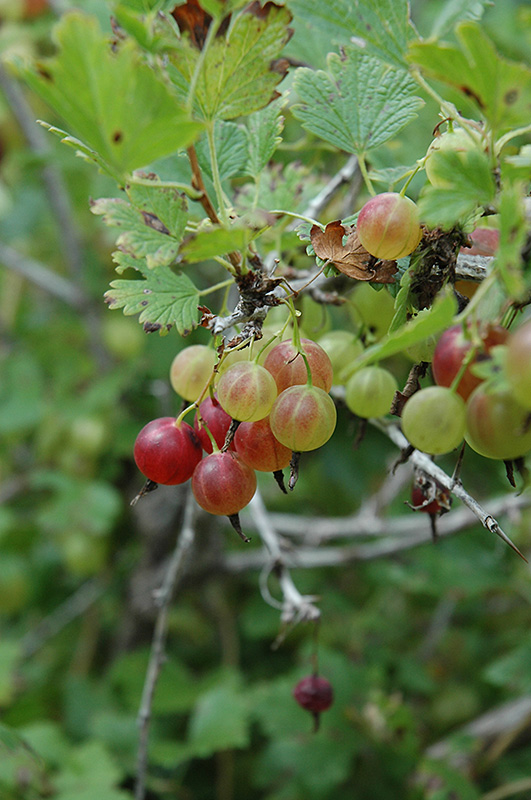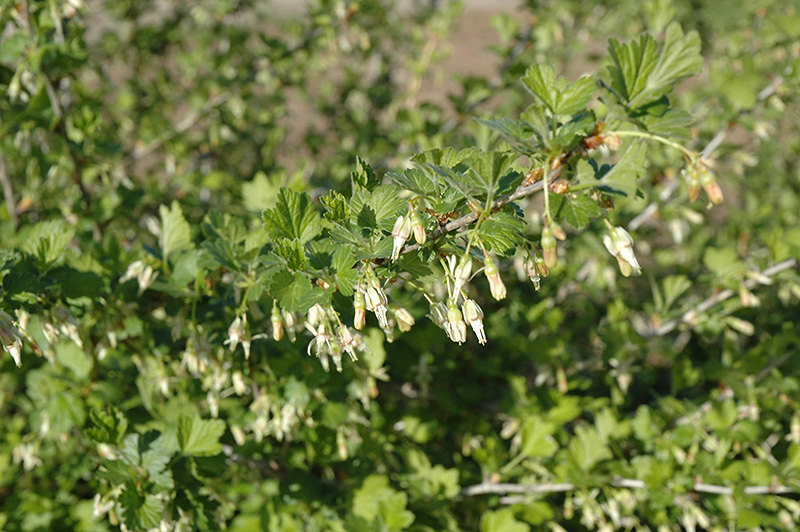Digging deeperPlant Library
Height: 4 feet
Spread: 4 feet
Sunlight:
![]()
![]()
Hardiness Zone: 3
Description:
A virtually thornless selection of gooseberry for the home orchard that produces abundant yellow-green fruit that develop a salmon pink blush when ripe, sweet flesh and a tangy skin; resistant to mildew, needs regular pruning for best production
Edible Qualities
Pixwell Gooseberry is a small shrub that is typically grown for its edible qualities. It produces chartreuse round berries with a salmon blush which are usually ready for picking from early to mid summer. The berries have a tangy taste and a juicy texture.
The berries are most often used in the following ways:
- Fresh Eating
- Baking
- Preserves
Features & Attributes
Pixwell Gooseberry has rich green deciduous foliage on a plant with an upright spreading habit of growth. The lobed leaves turn yellow in fall. It features an abundance of magnificent chartreuse berries with salmon blush from mid to late summer.
This is a multi-stemmed deciduous shrub with an upright spreading habit of growth. Its average texture blends into the landscape, but can be balanced by one or two finer or coarser trees or shrubs for an effective composition. This is a relatively low maintenance plant, and is best pruned in late winter once the threat of extreme cold has passed. It is a good choice for attracting birds, bees and butterflies to your yard. Gardeners should be aware of the following characteristic(s) that may warrant special consideration;
- Spiny
Aside from its primary use as an edible, Pixwell Gooseberry is sutiable for the following landscape applications;
- Mass Planting
- Hedges/Screening
- Orchard/Edible Landscaping
Planting & Growing
Pixwell Gooseberry will grow to be about 4 feet tall at maturity, with a spread of 4 feet. It has a low canopy. It grows at a medium rate, and under ideal conditions can be expected to live for approximately 15 years. This is a self-pollinating variety, so it doesn't require a second plant nearby to set fruit.
This shrub is typically grown in a designated area of the yard because of its mature size and spread. It does best in full sun to partial shade. It prefers to grow in average to moist conditions, and shouldn't be allowed to dry out. It is not particular as to soil type or pH. It is somewhat tolerant of urban pollution, and will benefit from being planted in a relatively sheltered location. Consider applying a thick mulch around the root zone in winter to protect it in exposed locations or colder microclimates. This particular variety is an interspecific hybrid.
A NetPS Plant Finder tool
This Plant Library is for informational purposes only. We may or may not carry the items listed. During many times of the year, we may carry many more plants in our store than are listed in the Plant Library. Please contact us directly at 303-690-4722 or visit our store for current availability and for assistance.

